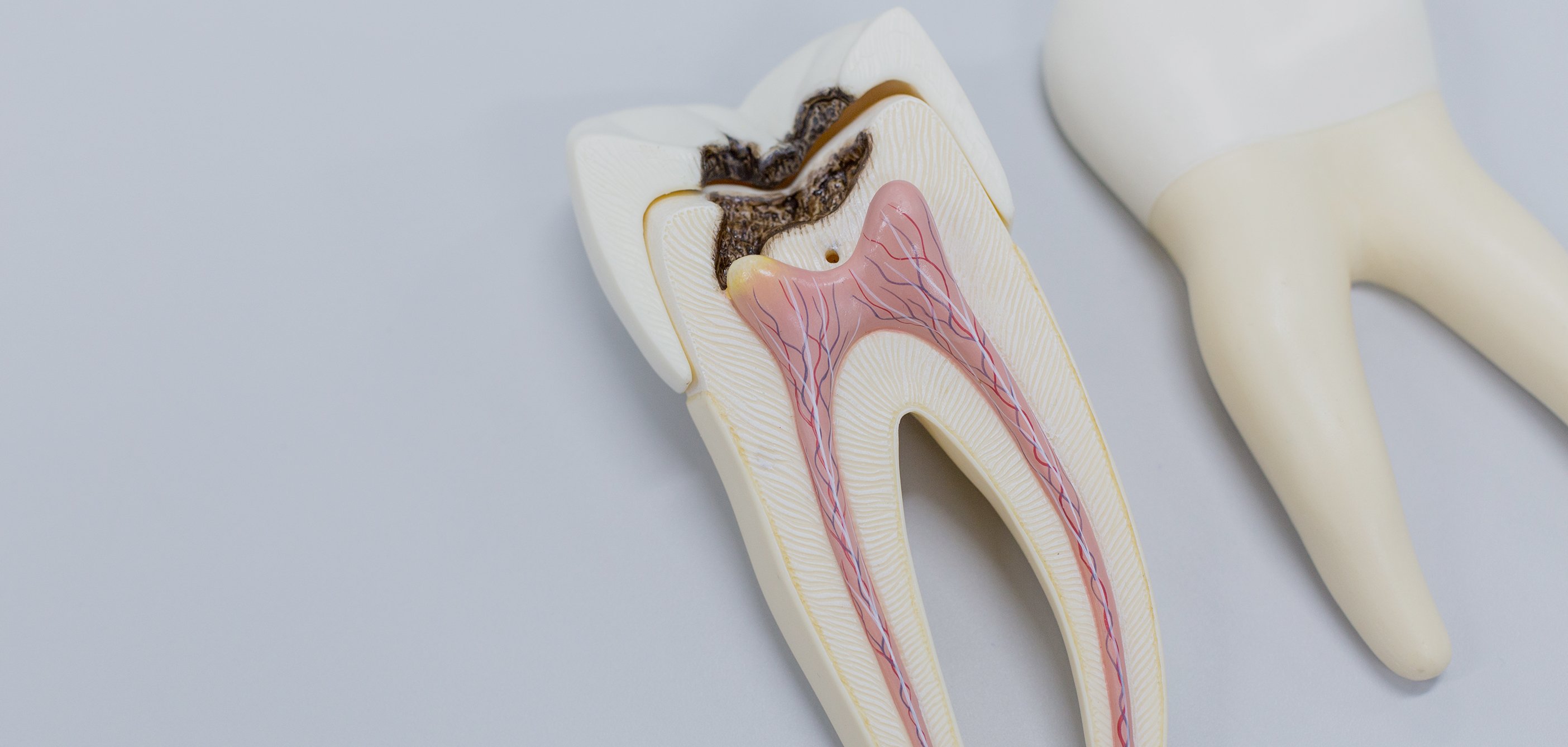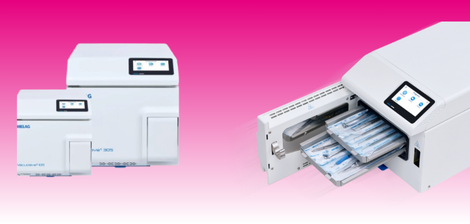What type of Endodontics should you use?
Most clinicians want their endodontic treatment to be easier, more efficient, simpler, and profitable, however, ultimately predictability and safety usually trumps all other considerations. Dentists have an inherent desire to do things properly and to the best of their ability. Therefore, when asked the question “Rotary or reciprocating – which system should I use?”, the answer is likely to vary depending on who you speak to! Whether that be an endodontist or a general dentist.
Research indicates that the predictability of both systems is similar, however, they differ in sequence, purpose and motion. Therefore, it is important that clinicians are aware of the differences and understand the various options available so that they can make an informed decision when choosing the right system to suit their patients’ needs. In many cases this may lead to them opting for both rotary and reciprocating as part of their armamentarium or choosing to stick to just one system. There is no right or wrong answer, it is about finding what works in your hands.
Remember that regardless of the system used, pre-flaring the canal to a larger initial diameter is critical to ensure subsequent shaping is rapid and efficient. A glide path file can be used for this.
The Glide Path
To minimise iatrogenic complications, clinicians should first explore the root canal system with small pre-curved, stainless-steel files (usually size 6, 8 and 10 K-files of .02 taper). Once canal patency has been obtained, the canal can be enlarged with larger hand files (size 15 and 20 files of .02 taper) to establish a “glide path” before the first rotary/reciprocating instrument is introduced into the canal. The glide path is defined as a smooth passage that extends from the canal orifice on the pulp chamber floor to the opening at the apex of the root.
The main purpose of this glide path is to create a canal diameter that is the same size (or bigger) then the first tapered rotary/reciprocating instrument that is used. To optimise safety, the more pronounced the curvature of a canal, the wider the glide path should be from canal orifice to apex.
Establishing a glide path has been done using various methods. Articles have described the use of hand stainless steel K-files. Other authors have advocated the use of reciprocating handpieces along with stainless steel K-files. Many instruments have been introduced to the market to serve this purpose: PathFiles™ (DENTSPLY/Maillefer), G-files™ (Micro-Mega) and Scout-RaCe files (FKG Dentaire, La Chaux-de-Fonds, Switzerland).
What is the difference between Rotary and Reciprocation?
Rotary: refers to mechanical, radicular endodontic shaping where the cutting blades function in a continuous clockwise (CW) direction. Some may say that the motion resembles that of the common drill.
Reciprocation: refers to mechanical, radicular endodontic shaping using either a counterclockwise (CCW) forward cutting motion followed by a clockwise (CW) restoring force/stress breaker or vice versa, both of which are measured in degrees. For example, UnoOne files engage and cut dentine in a 150-degree counterclockwise (CCW) direction and then, before the instrument has a chance to taper lock, it disengages 30 degrees in a clockwise (CW) direction.
|
|
Technique |
Sequence |
Motion |
|
After achieving a reproducible Glidepath, Shaper files cut away restrictive coronal dentine by “brushing” it away in a lateral motion. Finishing files produce shapes similar to those produced with reciprocating files. |
The colour sequence is usually the recognisable ISO standard colours and is, therefore, easy to remember. No mixing and matching; just follow the colour order as the optimal sequential geometries have been researched, calculated, and clinically tested. For example, with UnoTaper files the sequence will be: SX (optional use) S1 (purple) S2 (white) F1 (yellow) F2 (red) F3-F5 (optional use) |
Shapers are used in a “brush and follow” motion where they are gently brushed in a paint-brushing motion then followed deeper into the canal down to working length. Finishers will prepare the final shape and work in a reverse way to Shapers i.e. “follow and brush” coronally to connect the preparation. |
|
|
Following Glidepath production, a “crown-down” technique is used, with this usually single file system. |
The ISO colours come into play once again. Red (e.g. Primary file in the UnoOne system) is used in a multi-pass sequence. Irrigation and patency confirmation are very important as a single file is essentially replacing the workload of multiple files as used in a Rotary system. |
A single file is being asked to do the work of 2 or more files and it has to follow a narrower canal than the file itself. Therefore, there is a greater possibility of blocking the canal. Typically, 2 to 6 “passes” are required to reach working length using a “follow and brush” motion. The big difference, however, is that with each “pass”, the Reciprocation file should be removed, cleaned of dentine filings, the canal should be irrigated, patency confirmed with a No. 10 K-file, and the canal should be irrigated again. Then proceed with “pass” No. 2 and so on. |
Clinician variability
Across dentistry, one of the greatest variables is always the clinician (putting the patient aside). While products and operating environment play a significant role, the answer to Rotary vs Reciprocation depends mostly on the technique, and the technique is dependent upon the clinician’s skill, care, and judgment. Therefore, it is advisable to test out various systems and see what works best in your hands. This will also initiate greater clinical confidence, consistency and control. As Albert Einstein once said: “The only source of knowledge is experience.”
References
- West JD. Introduction of a new rotary endodontic system: progressively tapering files. Dent Today. 2001;20:50-57.
- West JD. Progressive taper technology: rationale and clinical technique for the new ProTaper Universal system. Dent Today.2006;25:64-69.
- Ruddle CJ, Machtou P, West JD. Endodontic canal preparation: innovations in glide path management and shaping canals. Dent Today. 2014;33:118-123.
- West JD. Ni-Ti goes gold: “ten clinical distinctions.” Dent Today. 2015;34:66-71.
- West JD. Is the new WaveOne endodontic reciprocation for me? Dental Economics. 2011;101:32-33.
- Kuttler S, West JD. Single file system: “the science of simplicity.” Dent Today. 2012;31:92-95.
- Ruddle CJ. Canal preparation: single-file shaping technique. Dent Today. 2012;31:124-129.
- Schilder H. Cleaning and Shaping the root canal. Dent Clin North Am. 1974; 18:269-96
- Walia H, Brantley WA, Gerstein H. An Initial Investigation of the Bending and Torsional Properties of Nitinol Root Canal Files. J Endod 1988; 14:346-351
- Dan Zhao, DDS, Ya Shen, DDS, PhD, bin Peng, DDS, PhD, and Markus Haapasalo, DDS, PhD. Micro-computed Tomography Evaluation of the Preparation of Mesiobuccal Root Canals in Maxillary First Molars with Hyflex CM, Twisted files, and K3 Instruments. J Endod. 2013; 39:385-8
- Yum J, Cheung GS, Park JK, Hur B, Kim HC. Torsional strength and toughness of nickel-titanium rotary files. J Endod. 2011; 37:382-6.
- Zuolo ML, Walton RE. Instrument deterioration with usage: nickel titanium versus stainless steel. Quintessence Int. 1997; 28:397-402
- Berutti E, Negro AR, Lendini M, Pasqualini. Influence of manual preflaring and torque on the failure rate of Protaper rotary instruments. J Endod. 2004; 30:228-30.
- Patiño PV, Biedma BM, Liébana CR, Cantatore G, Bahillo JG. The influence of a manual glide path on the separation rate of Ni-Ti rotary instruments. J Endod 2005; 31:114-6.
- Roland DD, Andelin WE, Browning DF, Hsu GH, Torabinejad M. The Effect of preflaring on the rates of separation for 0.04 taper nickel titanium rotary instruments. J Endod. 2002; 28:543-5.
- West J. Endodontic update. J Esthet Restor Dent. 2006; 18:280-300.
- Berutti E, Cantatore G, Castellucci A, Chiandussi G, Pera F, Migliaretti G, Pasqualini D. Use of nickel titanium rotary Pathfile to create the glide path: comparison with manual preflaring in simulated root canals. J Endod. 2009; 35:408-12.
- Mounce R. Endodontic K-Files: invaluable endangered species or ready for the Smithsonian? Dentistry Today. 2005; 24(7): 102-4
- Van der Vyver PJ. Creating a glide path for rotary NiTi instruments: part one. Endod Practice. 2011; 14(1): 40-3.
- Shen Y, Zhou HM, Zheng YF, Peng B, Haapasalo M. Current challenges and concepts of the thermomechanical treatment of nickel-titanium instruments. J Endod. 2013; 39:163-72.




